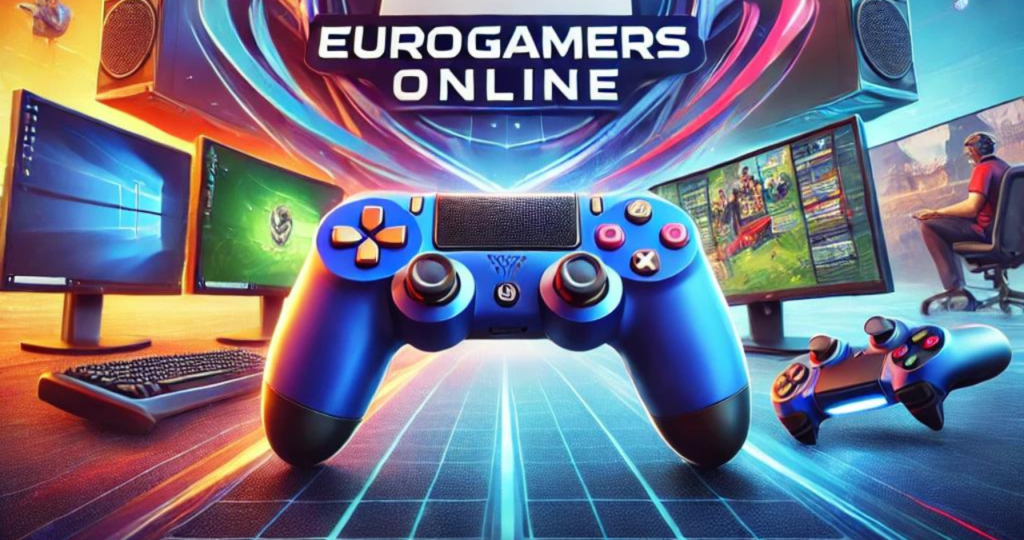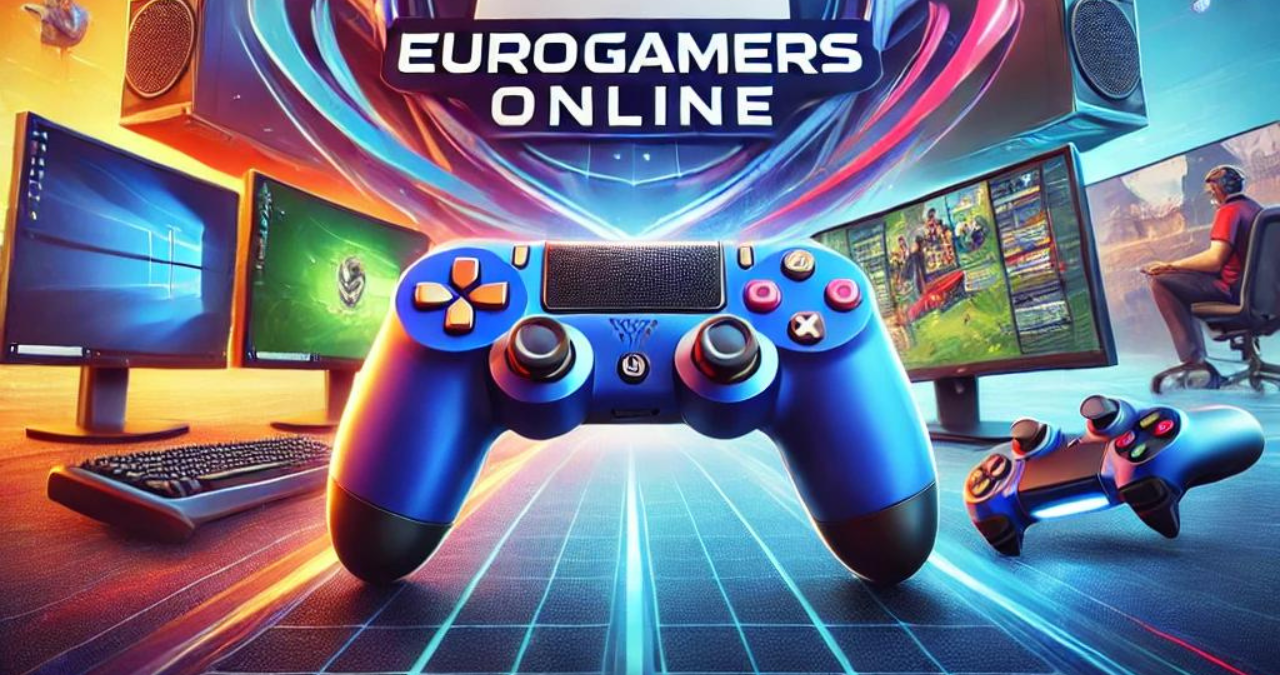Contents
Table of Contents
Introduction
Consoles Eurogamersonline Game consoles have transformed the entertainment landscape, evolving from simple devices designed for limited gameplay to complex systems that serve as all-in-one entertainment hubs. With innovations in hardware, connectivity, and game development, consoles have carved out a vital space in the hearts of gamers worldwide. For Europe and the global gaming community alike, gaming consoles have influenced not only how we play but also how we experience and interact with games.
In this article, we will explore the journey of game consoles, highlighting key developments, market trends, and their influence on the gaming world, especially with the community of EurogamersOnline.
The Evolution of Game Consoles
Game consoles, as we know them today, have come a long way from the rudimentary designs of their early predecessors. Let’s take a journey through their rich history.
The Early Beginnings: The Birth of Home Consoles
The first home console, the Magnavox Odyssey, was released in 1972. It was groundbreaking at the time, though rudimentary by today’s standards. Unlike modern consoles, which boast millions of colors and powerful processing abilities, the Odyssey could only produce very basic images on screen. Games required players to overlay plastic sheets on their TVs to simulate game environments, and the console lacked sound.
Despite these limitations, the Odyssey paved the way for future systems like the Atari 2600 (1977), which introduced the concept of interchangeable cartridges, allowing players to experience different games on the same system. It was this innovation that catapulted gaming consoles into mainstream entertainment.
The Golden Era: Nintendo, Sega, and the 16-Bit Revolution
The late 1980s and early 1990s marked the golden era of game consoles, defined largely by the rivalry between Nintendo and Sega. The Nintendo Entertainment System (NES), released in Europe in 1986, is often credited with reviving the video game industry after the crash of 1983. With iconic titles like Super Mario Bros. and The Legend of Zelda, Nintendo solidified itself as a gaming giant.
Meanwhile, Sega made waves with its Sega Genesis (or Mega Drive in Europe) in 1989. The Genesis was the first major 16-bit console, and it introduced gamers to faster-paced, action-heavy games like Sonic the Hedgehog. The competition between Nintendo and Sega sparked what is now referred to as the first “console war,” where both companies competed for market dominance through exclusive titles and better technology.
The Rise of 3D Gaming: PlayStation and N64
The mid-1990s marked a pivotal moment in gaming history as consoles began to move from 2D to 3D graphics. Sony entered the console market with the PlayStation in 1994, a system that would go on to redefine gaming. Sony focused on appealing to a broader, more mature audience, with games like Metal Gear Solid, Final Fantasy VII, and Gran Turismo. The PlayStation became an overnight success, selling over 100 million units worldwide.
Nintendo, on the other hand, released the Nintendo 64 (N64) in 1996. With games like Super Mario 64 and The Legend of Zelda: Ocarina of Time, the N64 was a technological marvel, providing some of the best and most influential 3D games ever created.
The 21st Century: The Modern Console Era
As we moved into the 21st century, the gaming industry saw unprecedented growth in terms of innovation and accessibility. The console wars of the past transformed into an ongoing competition between three industry giants: Sony, Microsoft, and Nintendo.
Sony’s Dominance with the PlayStation Line
After the monumental success of the original PlayStation, Sony continued to dominate the gaming industry with the PlayStation 2 (PS2). Released in 2000, the PS2 became the best-selling console of all time, with over 155 million units sold. It boasted backward compatibility with the original PlayStation, a vast library of games, and the ability to play DVDs, which made it an appealing multimedia device.
Sony continued to innovate with the PlayStation 3 (2006), introducing Blu-ray disc support and the PlayStation Network for online gaming. However, it was with the PlayStation 4 (2013) that Sony truly solidified its dominance, focusing on user-friendly interfaces, indie game support, and powerhouse exclusives like The Last of Us, God of War, and Horizon Zero Dawn.
Microsoft Enters the Arena: Xbox and Online Gaming
Microsoft entered the console market in 2001 with the Xbox, positioning itself as a direct competitor to Sony and Nintendo. The Xbox boasted powerful hardware and popular games like Halo: Combat Evolved, which established Xbox’s place in the market. However, it was with the Xbox 360 (2005) that Microsoft revolutionized the gaming experience by introducing Xbox Live, a robust online gaming service that changed the way people interacted with consoles.
While the Xbox One (2013) faced early criticism due to its heavy focus on multimedia rather than gaming, Microsoft learned from its mistakes with the Xbox Series X and Series S (2020). These systems were designed for high performance, offering backward compatibility and integration with the Xbox Game Pass, a subscription service that allows players access to a vast library of games for a monthly fee.

Nintendo’s Unique Approach: From Wii to Switch
While Sony and Microsoft continued their rivalry, Nintendo opted for a different path, focusing less on graphical prowess and more on innovative gameplay. This philosophy was embodied by the Nintendo Wii (2006), which introduced motion controls and appealed to a broader audience, including families and casual gamers. The Wii became a massive success, selling over 100 million units worldwide.
Nintendo’s follow-up console, the Wii U (2012), struggled in the market, but the company bounced back with the Nintendo Switch in 2017. The Switch’s hybrid design allows it to function as both a home console and a portable gaming device, making it a versatile and beloved platform. Games like The Legend of Zelda: Breath of the Wild and Animal Crossing: New Horizons have helped the Switch become one of the best-selling consoles of all time.
Game Consoles and Eurogamers: A European Perspective
European Gaming Trends
Europe has always been a significant market for gaming consoles. European gamers, known for their diverse tastes and preferences, have helped shape the strategies of major console manufacturers. While North America has traditionally been seen as the primary market for companies like Sony and Microsoft, Europe has grown in importance, especially with the rise of internet gaming.
In particular, platforms like EurogamersOnline have been central to the European gaming scene. With vibrant communities, reviews, and discussions, this platform has offered insights into the preferences of European gamers. Eurogamers are known for favoring a mix of mainstream hits and niche titles, with a growing appreciation for indie games, which have seen a boom on platforms like PlayStation, Xbox, and the Nintendo eShop.
Regional Preferences
Different regions in Europe show varying preferences for consoles. For example, PlayStation dominates in countries like the UK, France, and Germany, whereas the Xbox has found more success in Northern Europe and Scandinavian countries. Nintendo, with its family-friendly games and iconic franchises, enjoys widespread popularity across the continent.
The growth of online multiplayer gaming has also impacted console preferences in Europe. Fast, reliable internet infrastructure in countries like Germany and the UK has made Xbox Live and PlayStation Network integral to gaming experiences, especially with the rise of esports and competitive gaming leagues.
Cultural Influence on Game Development
European gamers have also played a role in influencing game development, especially within the indie gaming sector. Many European developers have gained prominence, releasing critically acclaimed titles that often explore different themes from their American or Japanese counterparts. Games like The Witcher 3: Wild Hunt (Poland), Hellblade: Senua’s Sacrifice (UK), and Control (Finland) have not only pushed the boundaries of storytelling but have also proven that Europe is home to world-class game development talent.
The Future of Game Consoles: Where Are We Heading?
As technology continues to advance, the future of game consoles looks incredibly exciting. Several trends are emerging, which could define the next era of gaming.
Cloud Gaming and Streaming
One of the biggest potential shifts in gaming is the rise of cloud-based gaming services. Both Microsoft and Sony have already begun experimenting with cloud gaming, with services like Xbox Cloud Gaming and PlayStation Now. These platforms allow players to stream games directly to their consoles or even to other devices like smartphones, removing the need for powerful hardware at home.
This could change the way consoles are developed in the future, as physical devices may become less important, with more emphasis placed on cloud services and software.
Virtual Reality (VR) and Augmented Reality (AR)
While virtual reality gaming has existed for a few years now, it has yet to fully break into the mainstream. However, advancements in VR and AR technology could be game-changers. Companies like Sony are already pushing VR with their PlayStation VR systems, and the next few years could see a much bigger adoption of these technologies in the console market.
Nintendo has also experimented with AR, particularly with games like Pokemon Go on mobile devices. It wouldn’t be surprising to see AR play a more significant role in future Nintendo consoles.
The Role of AI in Game Design
Artificial Intelligence (AI) is becoming more integrated into game development, helping to create smarter NPCs, better procedurally generated content, and more immersive game worlds. In the future, AI could significantly enhance the gaming experience on consoles by creating more dynamic and adaptive gameplay experiences.
Conclusion
Consoles Eurogamersonline Game consoles have become more than just platforms for playing video games. They’ve evolved into entertainment systems that offer multimedia experiences, online communities, and unparalleled immersion in vast digital worlds. From the early days of the Atari 2600 to the current generation of consoles like the PlayStation 5, Xbox Series X, and Nintendo Switch, the gaming console industry has consistently shaped the way we play and enjoy games.
For Eurogamers and the global community alike, consoles are not just tools but gateways into new, shared experiences. With the rise of cloud gaming, virtual reality, and AI-driven game development, the future looks even more promising. The journey of game consoles continues to be one of innovation and adaptation, and it will undoubtedly continue to captivate gamers for years to come.
Frequently Asked Questions (FAQs)
1. What is the most popular gaming console in Europe?
The most popular gaming console in Europe tends to vary by region. PlayStation is generally the leader in countries like the UK, France, and Germany, while the Xbox enjoys popularity in Northern Europe. Nintendo Switch also holds significant market share across the continent due to its unique hybrid design.
2. What are some must-play console games for Eurogamers?
Popular console games for Eurogamers include titles like The Witcher 3: Wild Hunt, FIFA, Call of Duty, and Assassin’s Creed. Indie games, such as Hades and Celeste, have also gained popularity, with many gamers exploring different genres.
3. How has cloud gaming influenced modern consoles?
Cloud gaming has started to reshape the gaming landscape by reducing the need for high-end hardware at home. Services like Xbox Cloud Gaming and PlayStation Now enable players to stream games directly to their devices, making gaming more accessible and portable.
4. What makes Nintendo Switch so popular in Europe?
The Nintendo Switch’s hybrid design, which allows it to function as both a home console and a portable device, is a key factor in its popularity. Additionally, iconic franchises like The Legend of Zelda and Super Mario have resonated well with European gamers, along with Nintendo’s family-friendly game selection.
5. What will the future of game consoles look like?
The future of game consoles may see more emphasis on cloud gaming and streaming services, virtual reality, augmented reality, and artificial intelligence in game development. Consoles may evolve into more software-focused platforms, with physical hardware playing a reduced role in gaming experiences.





